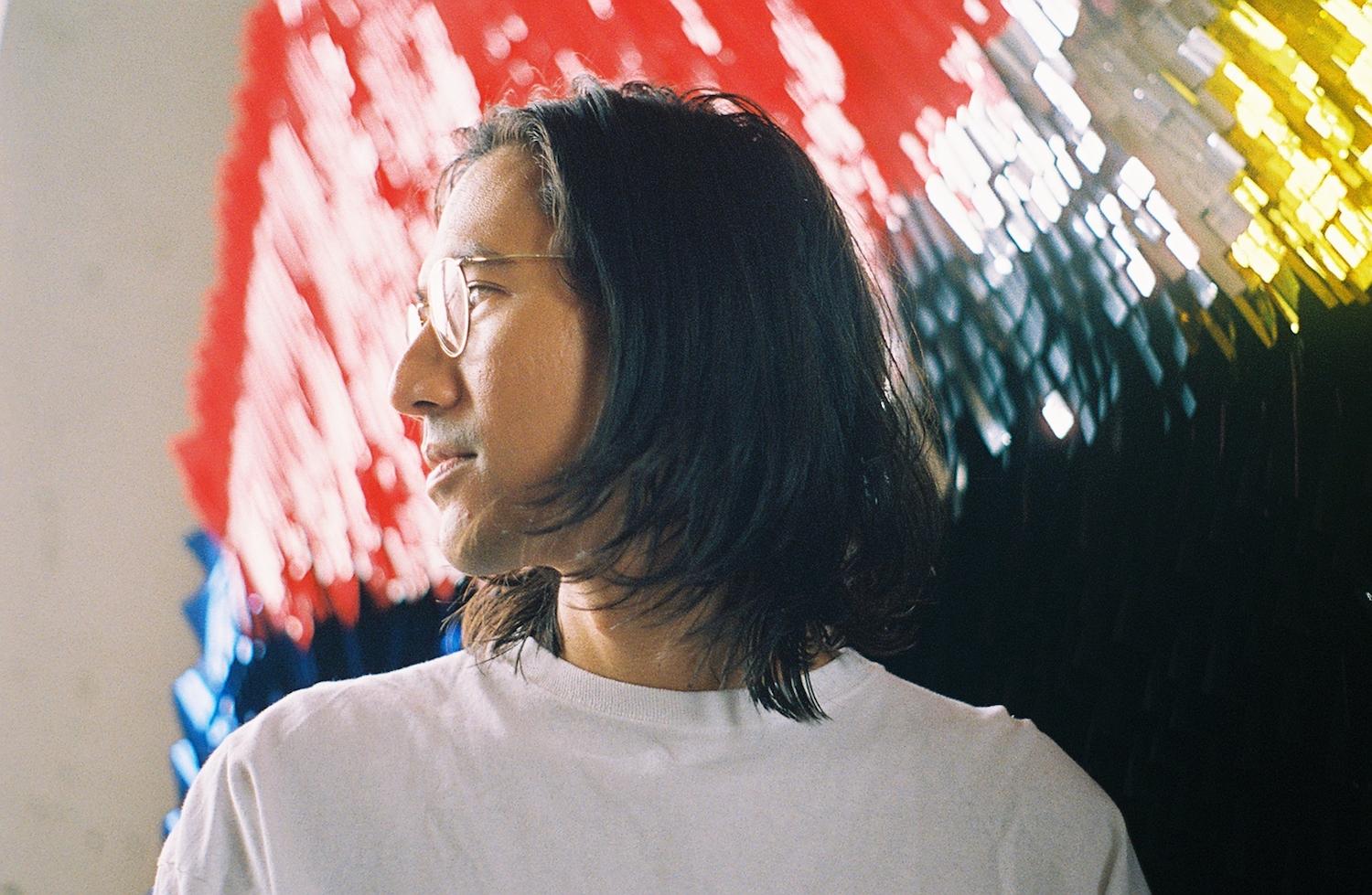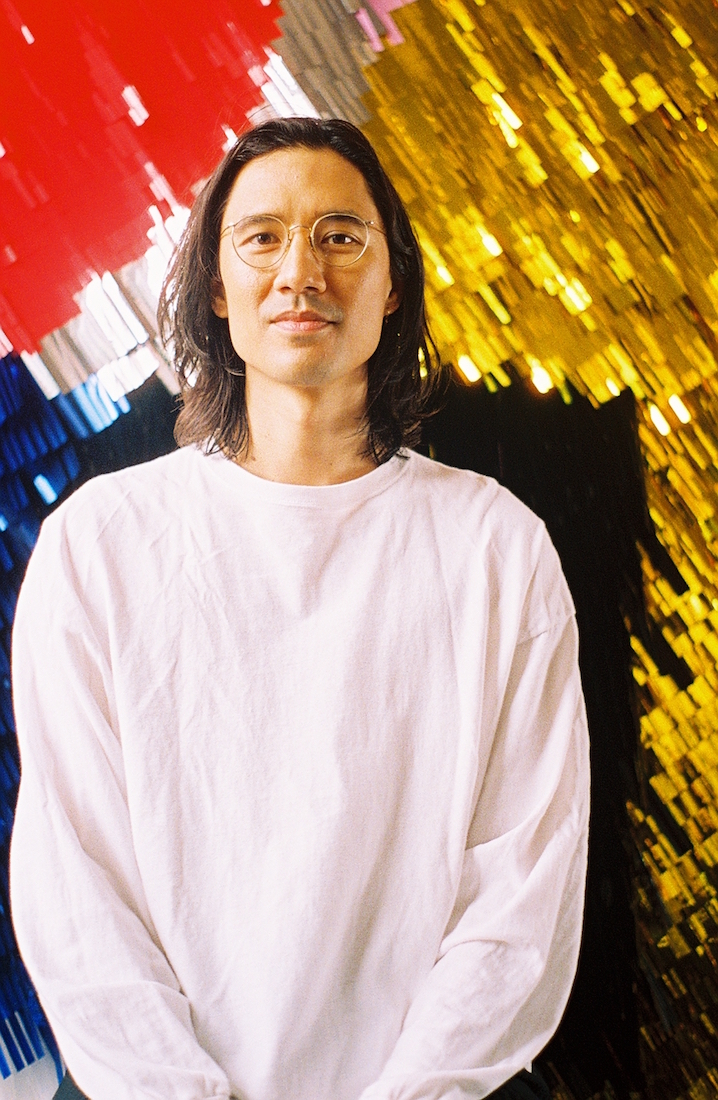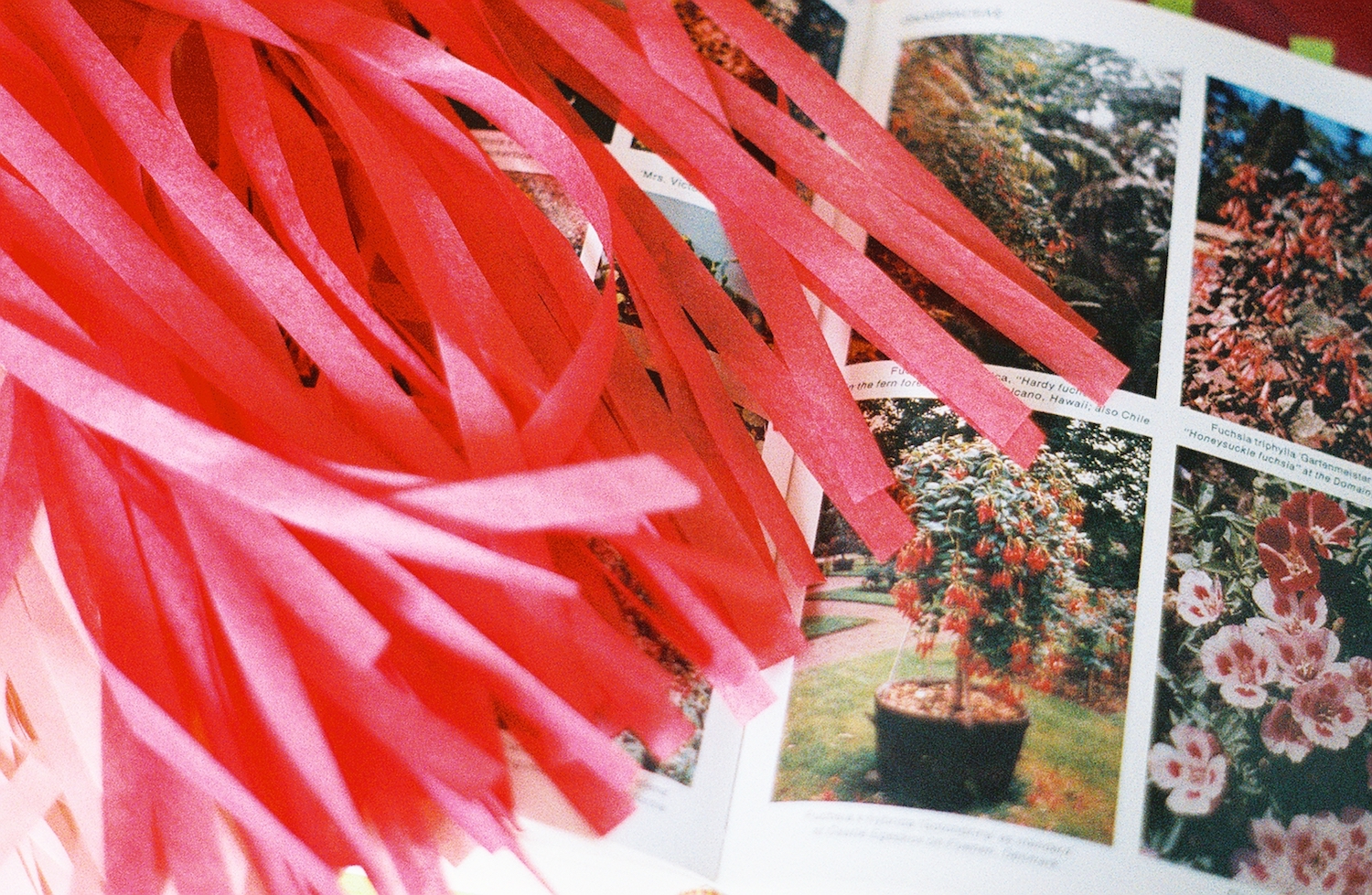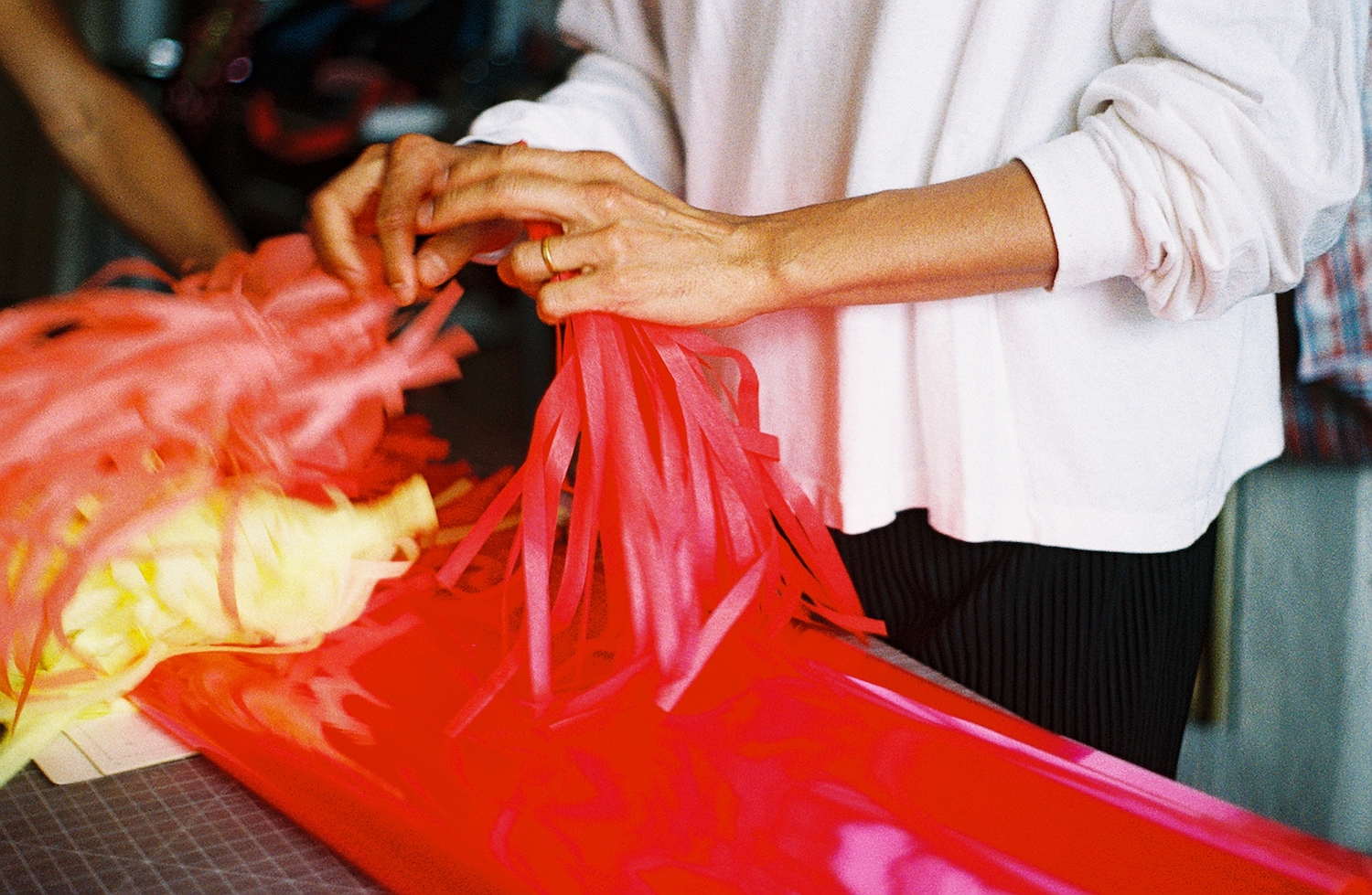Confetti System’s Nicholas Andersen didn’t see his craft-focused Oʻahu upbringing reflected in design, so he created his own world.
Text by Mitchell Kuga
Images by Carter Schneider
When he was little, Nicholas Andersen’s parents bought him a huge piñata for his birthday party, stuffing it with candy and—somewhat dangerously—quarters. When it finally ripped open, kids went diving for the candy, and adults were going “Hey! There’s money!” as a flurry of confetti rained down, recalls Linda Valite-Andersen, his mother. Meanwhile, the 4-year-old “just stood there and had the [confetti] flutter on top of him,” she says.
He might’ve been studying the piñata’s construction. When Andersen and Julie Ho, the duo behind Confetti System, exhibited at the Museum of Arts and Design’s 2014 biennial, they embellished a large wall with textural flurries of gold amorphous fringe. Andersen called the piece, “Fringe Wall-Copper,” their take on a deconstructed piñata.
Confetti System is a design studio specializing in paper tassels, lei-like garlands, and avant-garde piñatas. (Imagine if Party City graduated from the Rhode Island School of Design). Since its inception in 2008, Confetti System’s work has been featured in window displays for the likes of Opening Ceremony and J.Crew, graced the cover of the New York Times’ T Magazine, and appeared in Beyoncé’s “1+1” music video. Their sensibility is the rare hybrid that looks just as appropriate jazzing up an intimate party—they did the decor for my wedding in December 2017—as it does displayed in art institutions.
Before starting Confetti System, Andersen and Ho worked together in the mid-2000s as craft stylists at Martha Stewart Living. The magazine industry was still flourishing and Stewart had recently been released from prison, creating a swell of attention around the brand. “It was great for a few years—and then we kind of lost ourselves in it,” says Andersen, who is 38 years old, sitting in Confetti System’s industrial Bushwick studio surrounded by stacks of paper and scraps of fabric. “Five days a week you’re entering this pristine world that’s not yours, that doesn’t have any link to your history.” Andersen, who is half-Filipino and was born and raised in Honolulu, and Ho, who was born in Taiwan and raised in New York, felt an itch to create work that reflected their upbringings. “Things like Hawaiian crafts or Chinese temple decorations, it was irrelevant [at Martha Stewart],” he says. So they decided to do it themselves.
This ethos of self-sufficiency was baked into Andersen’s upbringing. “He grew up in an environment where, if we needed something, we would make it,” says Valite-Andersen, a retired school teacher. While he was in utero, Andersen’s parents made customized fittings for sailboats. His father, who grew up hiking in Michigan in the do-it-yourself ethos of the 1970s, made Andersen his first backpack. And his grandmother, Valite-Andersen’s mother, let Andersen use her eyeshadow for art projects. “Even when he got the 32-box of crayons, the ultimate was still using eyeshadow palettes,” Valite-Andersen says. “He just had that knack for color.”
At Moanalua High School, Anderson funnelled this energy into composing the yearbook and making backdrops for school activities, often with his best friend, Karlo Bello. The two were inseparable. “We weren’t out,” Andersen says, “but we basically sort of protected each other. We would hide away and positively support each other.” Shortly after moving away for college— Andersen at University of Michigan and Bello at Maryland Institute of College of Art—Bello introduced Andersen to his classmate Daniel Haggerty. The couple got married in 2014 at Makapu’u Lighthouse on Oʻahu’s east side. Bello describes Andersen as his “chosen family.”
In May 2017, Bello, Andersen, and three friends started a roving, sorta-monthly dance party called Bubble_T, with the intention of spotlighting queer Asians in New York City nightlife. For the parties, Andersen is responsible for decor and graphic design, and Bello DJs and performs under his drag moniker Bichon. The collective has been featured in a New York Magazine fashion spread and was invited to throw a lunar new year party at MoMA PS1 in February 2018. There, Andersen transformed a sprawling gallery space into a fantasia of red-fringe. A different party sported the loosely Hawaiʻi-centric theme “TROPIKP_A_ZIA,” and had Spam musubi available for purchase.
As someone who has never really felt at home in traditional nightlife spaces, Andersen aims for comfort while decorating Bubble_T’s parties. “It’s deeply animal, to feel a little shrouded,” he says, citing the lush walks to school he took through Moanalua Gardens as an enduring influence. “The feeling of being surrounded [by nature] is so comfortable. I’m just doing that with garlands and tassels.”
Though he has lived in New York since 2001, Andersen says the hands-on craft of stripping, twisting, and binding materials connect him to something historically and spiritually Hawaiian. He calls Confetti System an antidote to homesickness. “It’s a meditation on things I remember doing in the fourth grade,” he says, “knitting together a little piece of paper and making it a different thing, and feeling good about it.”
He also links his care for craft to his late grandmother, who managed the Jams World factory in Kalihi. “In kindergarten, I’d go after school and roam the factory floors, looking at fabrics and colors and trimming threads for her,” he says. “It’s one of my most precious and favorite memories: Everyone having a good time making stuff.”
Visit confettisystem.com for more information.







